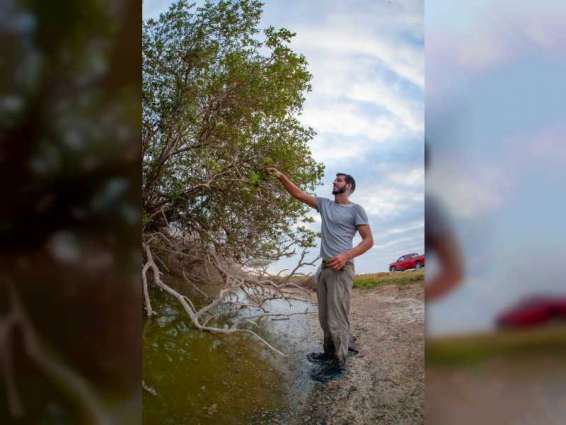(Pakistan Point News - 02nd Feb, 2021) ABU DHABI, 1st February 2021 (WAM) - The gray mangrove tree that is common to the coast of the UAE is a pan-tropical species, which has a distribution that extends from New Zealand to the Arabian Gulf. As an important 'ecosystem engineering' species that provides habitat for many other species and protects coastlines from erosion and storm surges, there is growing research across the globe on how this species might cope with future climate change.
A research group led by the NYU Abu Dhabi’s (NYUAD) Center for Genomics and Systems Biology (CGSB) have published a high-resolution genome for the gray mangrove (Avicennia marina), providing an important resource for researchers around the world studying this species, in the journal G3: Genes|Genomes|Genetics.
Associate Professor of Biology at NYUAD and project lead John Burt said: "The gray mangrove is the most widely distributed mangrove species in the world, and it is the only natural evergreen forest here in Abu Dhabi and across the Arabian Peninsula. This is the first highly detailed reconstruction of the genome for this mangrove, a species that is incredibly important both locally and across the tropics."
The goal of the research was to develop a high-resolution resource for use by global scientists trying to understand the biology of this widely occurring tropical species.
"Our new assembly provides an excellent reference for evolution and genetic connectivity studies focused on A. marina and related species," said NYUAD research group member Guillermo Friis-Montoya. "An annotation of unprecedented quality is also provided, enabling the identification of candidate genes involved in evolutionary processes like local adaptation and speciation. Overall, the data reported are a valuable resource for the study of mangrove biology, a highly relevant species both ecologically and socioeconomically."
Burt and Friis-Montoya continue to study mangrove populations in Abu Dhabi and are nearing completion of a two year study of the environmental biology of this species.
"The UAE actually represents a uniquely challenging environment, with extremely hot summers, very cold winters, and very salty seawater that is challenging for mangroves," said Burt, "by combining our genomic analyses with monitoring of the molecular and biochemical responses of Abu Dhabi’s mangroves over time, we will show how our local mangroves have been able to cope and even thrive in conditions that are found nowhere else in the world."




